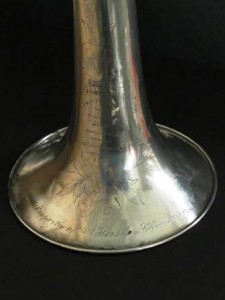by Valerie Seiber
The Hershey Story has recently acquired several new and exciting artifacts for the museum’s permanent collection. Each artifact helps to tell and preserve the unique story of Milton S. Hershey, the businesses he created and the communities he founded.
Shirt made from Hershey’s Cuban sugar bag
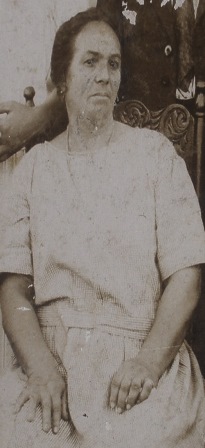
Vicenta Hernandez-Rico (1883-1959) was born in Spain and immigrated to Cuba in 1904. (Image courtesy of Elena Prieto)
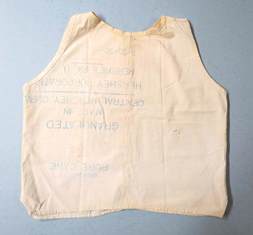
From 1916 to 1946 the Hershey Chocolate Corporation owned and operated sugar plantations and refineries in Cuba. Mr. Hershey’s reason for investing in Cuba was to ensure he had access to sugar (a key ingredient in making milk chocolate) through World War I. Excess sugar was sold to consumers and businesses in 5, 10, 25 and 100 pound cotton bags. One such customer of Hershey’s sugar was Joaquin Prieto-Hernandez, a bakery owner living in Havana, Cuba. Joaquin’s bakery, Panaderia Nuestra Señora del Rosario Sociedad Anonima (Our Lady of the Rosary Bakery Company, Ltd.) bought sugar in 100 pound sacks.
Hernandez-Rico, repurposed the sacks into different items, including clothing. She made this sleeveless shirt in the early 1940s from an empty Hershey’s sugar sack. Though the blue printing has faded and the sack has been turned inside-out and upside-down, the words “Central Hershey, Cuba” are still clearly visible through the material. Vicenta died in 1959 and her other son Carlos Prieto-Hernandez, kept the shirt along with other family relics in a Spanish trunk for over 30 years until his niece visited Cuba in 1994 and retrieved them.
Pneumatic Transit System Canister
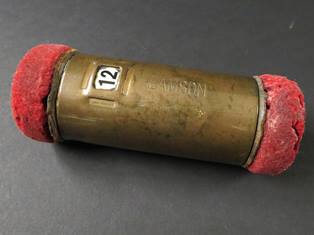
Pneumatic Tube Canister
In 1920, the Hershey Department Store opened in the Press Building on the corner of Chocolate Avenue and Park Drive. Each department had a cash register for transactions. However, receipts for credit transactions were sent to the bookkeeping department located on the second floor near the furniture department. For efficiency, credit slips were sent via a pneumatic tube transfer system. The receipt was placed in a canister, like the one here, and then placed inside a pressurized tube. Air pressure propelled the canister to its final destination through a system of pipelines inside the building. The canister was made by the Lamson Engineering Company, Ltd. and dates to the mid-20th century.
Trombone from the Hershey Band
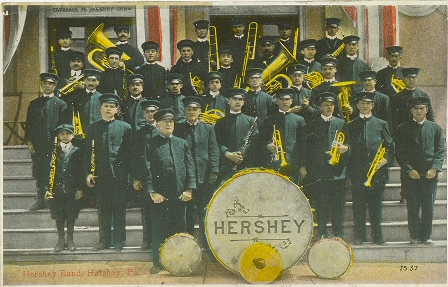
The Hershey Band, c. 1913 (Image courtesy Hershey Community Archives, PC883)
Formed in 1906, the Hershey Band was comprised of 30-40 men who lived in or near Hershey, PA. During summer evenings, the Hershey Band could be found playing at the Hershey Park Bandstand. Musicians received $3.00 for the summer season until 1912 when members were paid $1.00 for each rehearsal they attended throughout the year. It was hoped this change would entice members to regularly attend the weekly practice sessions and thus improve the band’s reputation. During the off-season, the band played at special events, the Hershey Store Company and was even available for hire. The band became well known for their broad repertoire of sacred and secular music under the direction of Samuel J. Feese. Upon Feese’s death in 1918, participation in the Hershey Band declined and never achieved the same success as under his leadership. This trombone was made by J.W. Pepper around 1910 and is engraved with “Hershey Chocolate Co.” on the bell. Instruments were purchased by the chocolate factory for members of the band.

